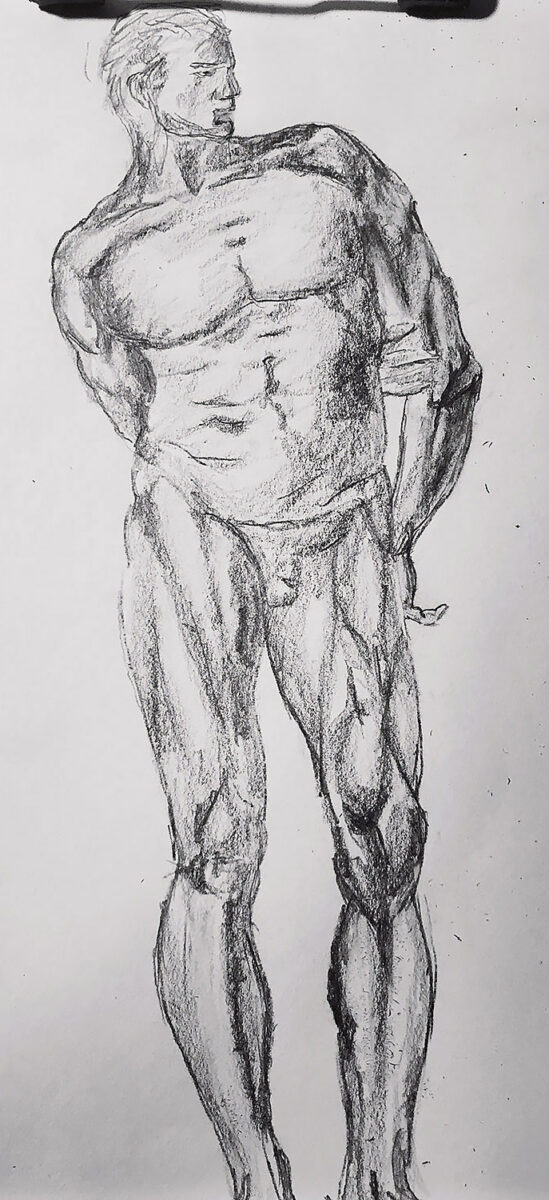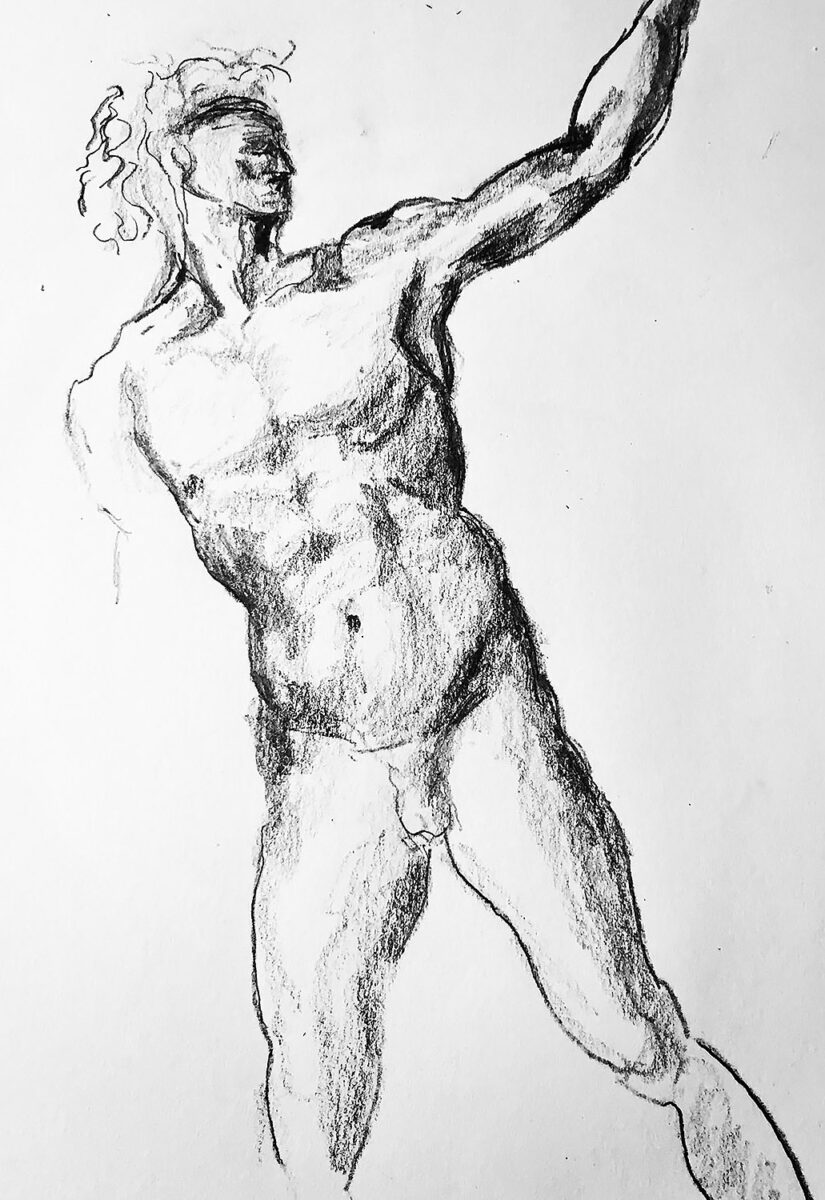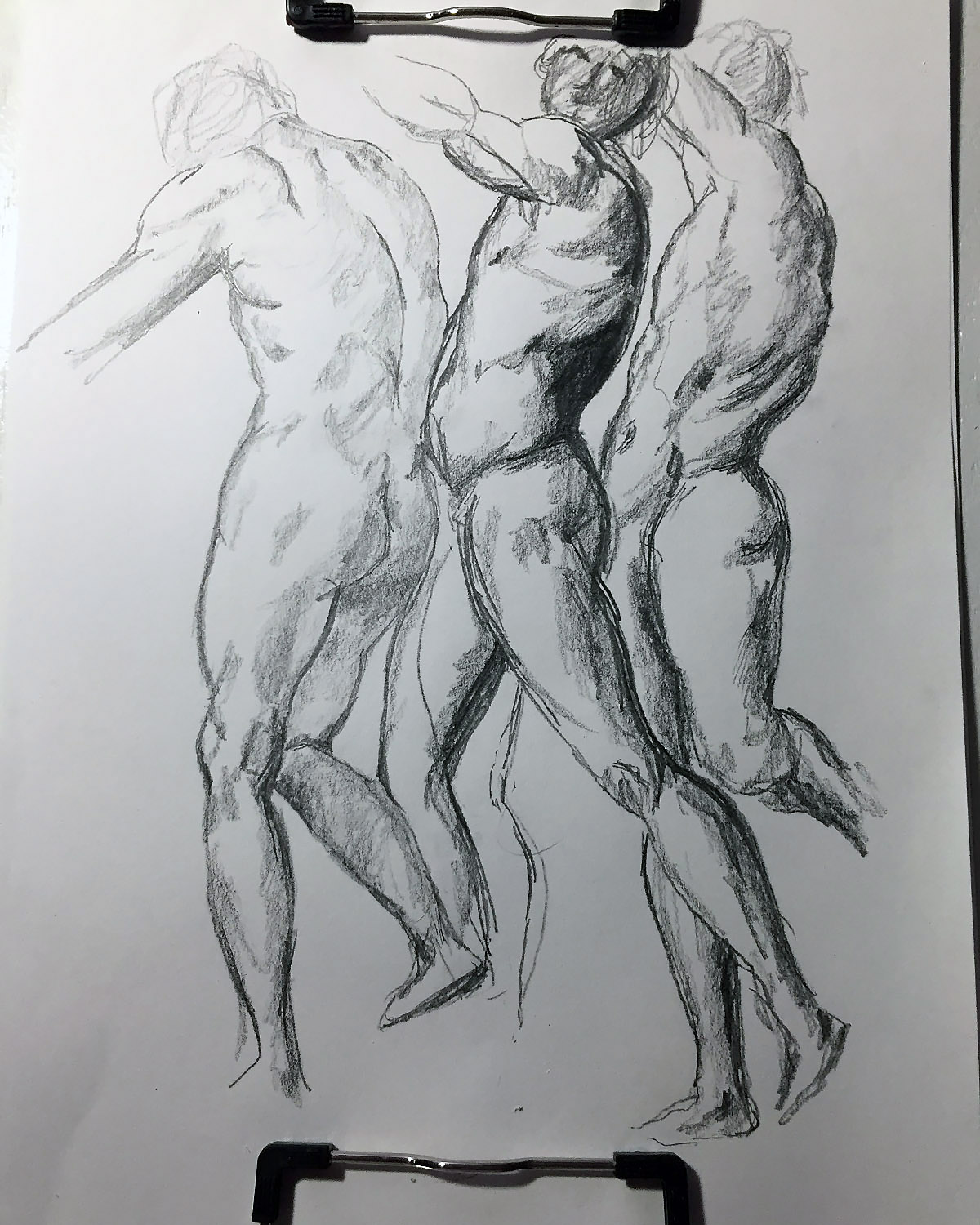
The original is titled “A male nude with proportions indicated” I however, left off the proportions, so now it is just a male nude. The drawing by Michelangelo is in the Royal Collection in merry ole’ England. The original was done in two shades of red chalk. I did mine in two shades of pencil. I guess I could use chalk but it has that ‘scratchy’ feel to it that I do not care for. Of course graphite pencil is not incredibly smooth. If you find that interesting, then I am speechless. But I need to finish this blog post so I will continue.
“What are those writing issues?”
I am writing this post in the ‘word counter.net’ online application. It gives me important information about my writing. For instance, up to this point, it should have taken you about 32 seconds to read this. If you were speaking it out loud for some strange reason, then it would have taken you about 50 seconds. Fascinating stuff indeed. It also shows that I am writing at the 7 to 8th grade level. And believe it or not it is doing this all for FREE! It keeps reminding me that I should upgrade to the application ‘Grammerly’ which checks for grammar, spelling issues and plagiarism. I can even do a brief check for free. Let’s do that now, shall we. It says I have, 2 issues of grammar, 4 spelling mistakes, 12 punctuation “errors” (which in my writing style is actually pretty darn good) and 8 additional writing issues. What are those writing issues? I would have to pay to find out. But since I’ve been humiliated already I think I will leave it there. On the plus side, they did not find any problems of plagiarism and I consider that to be a big win!



